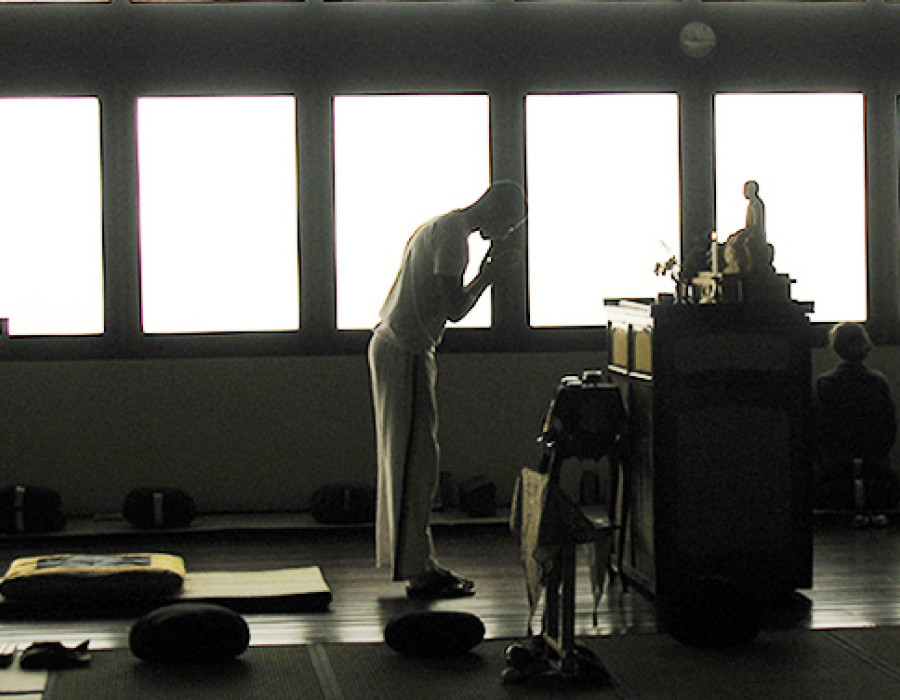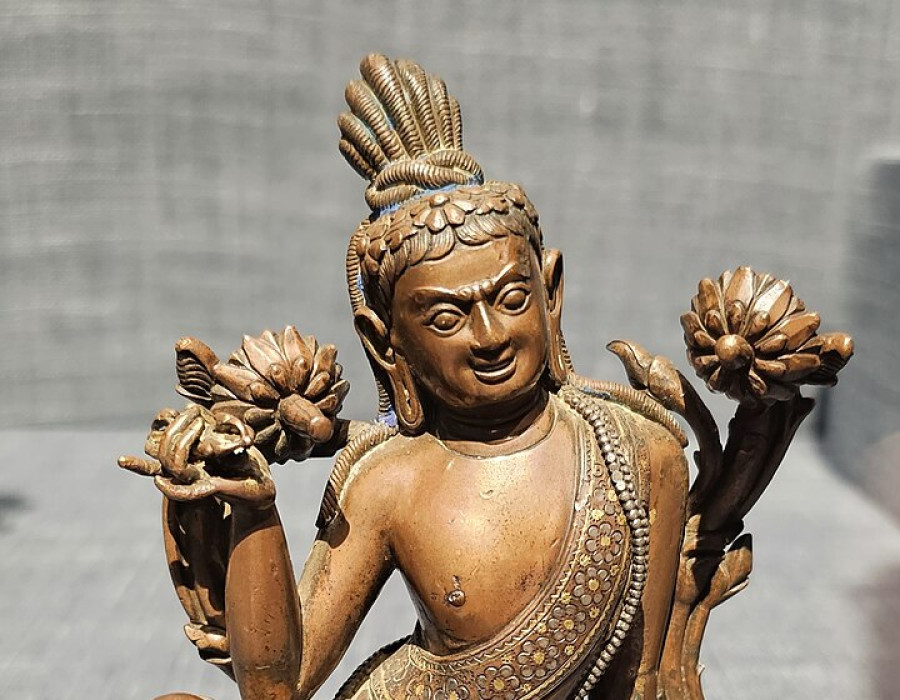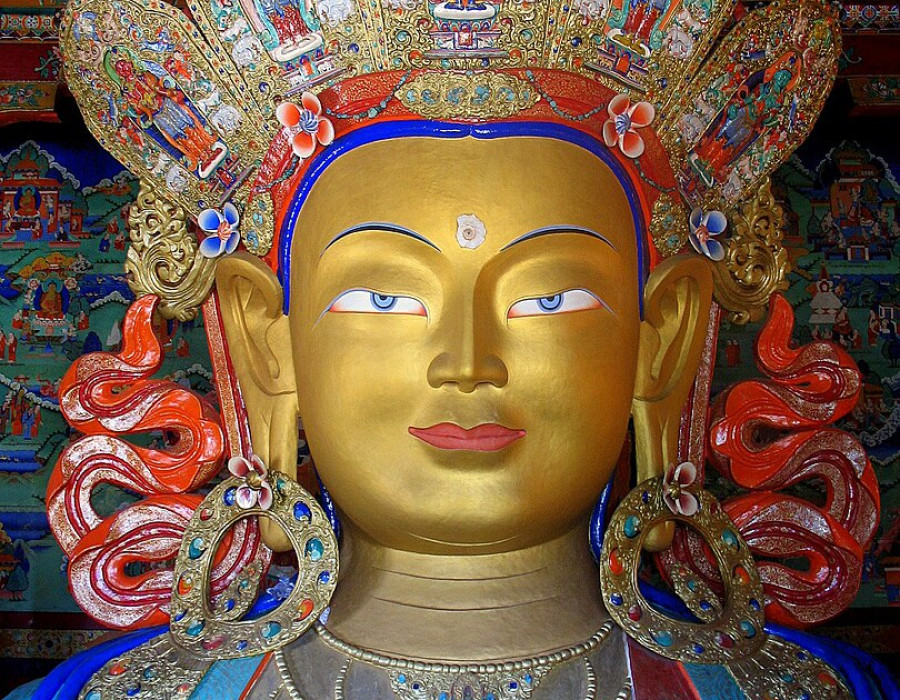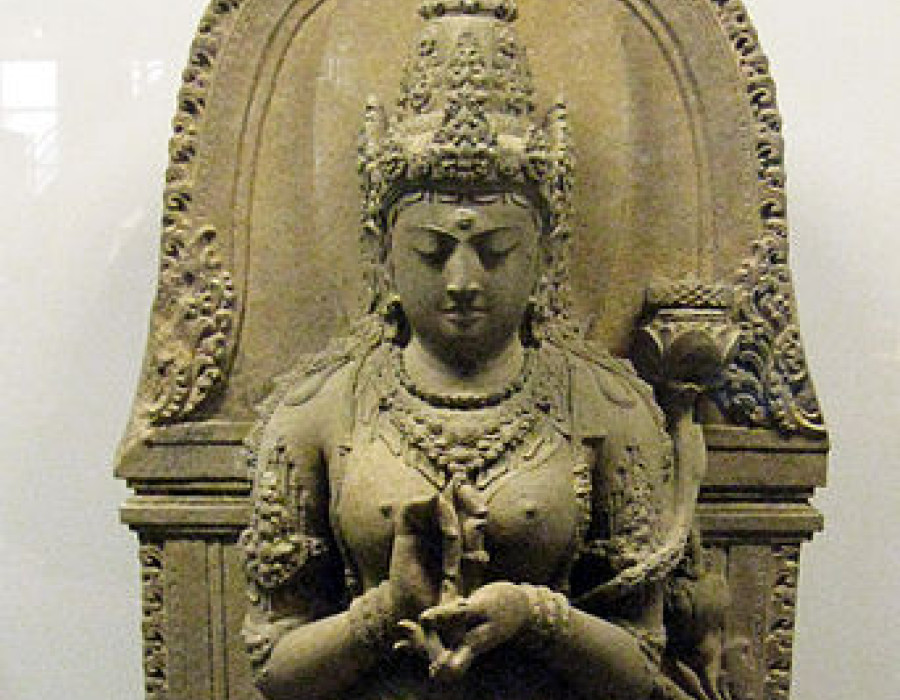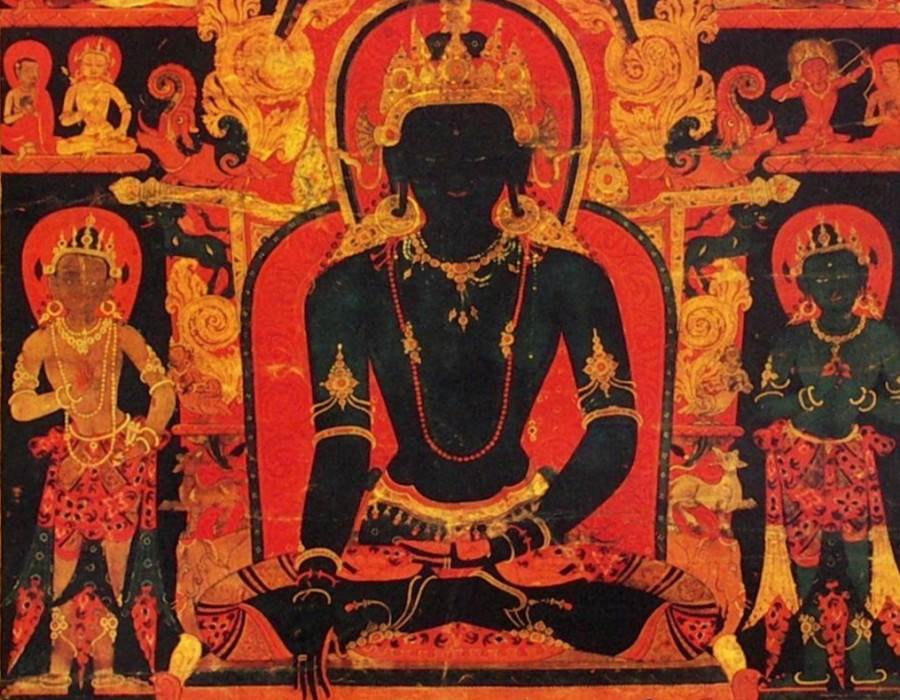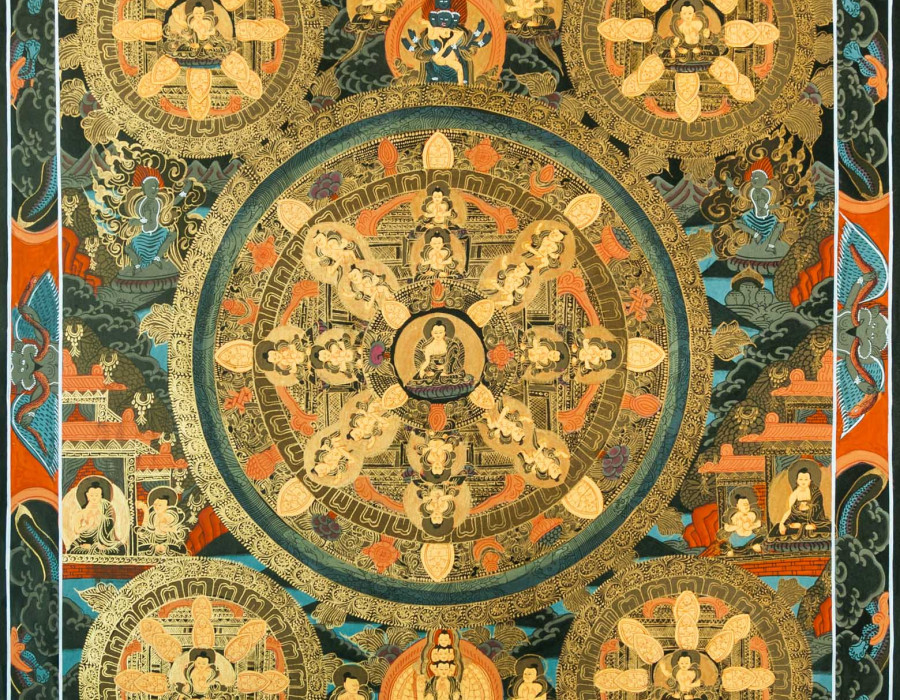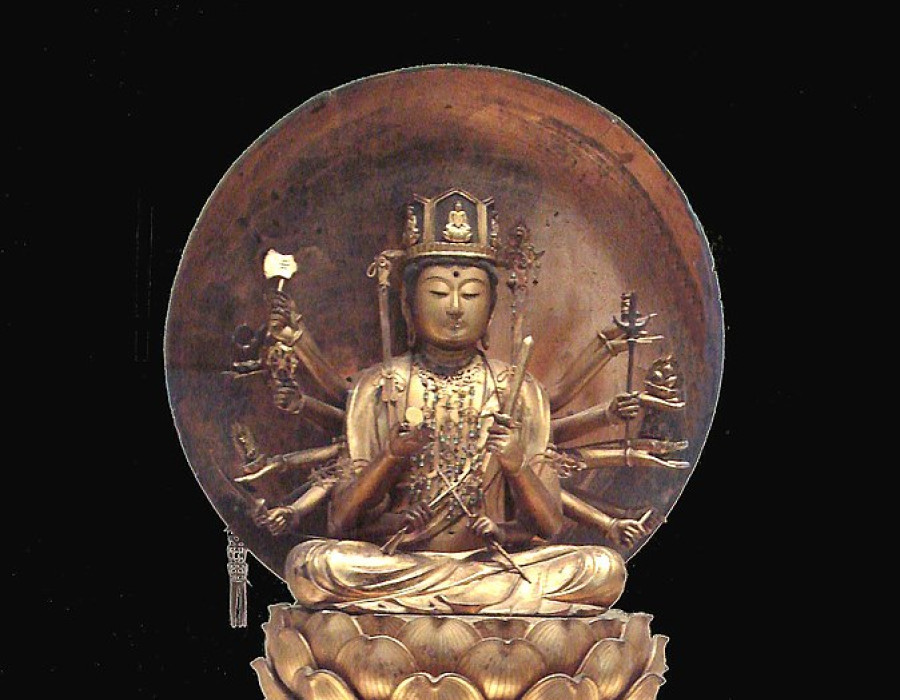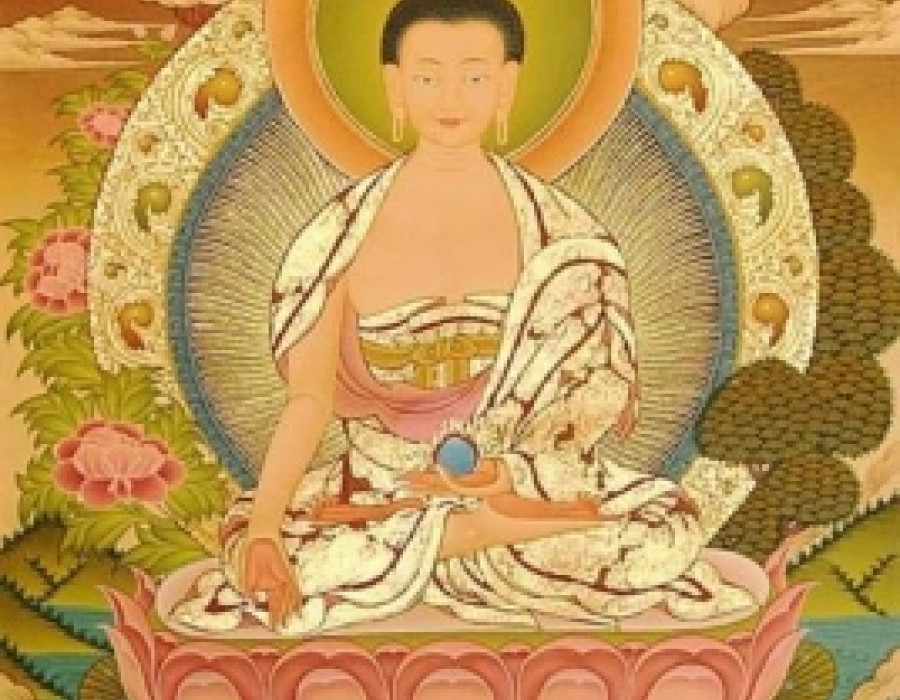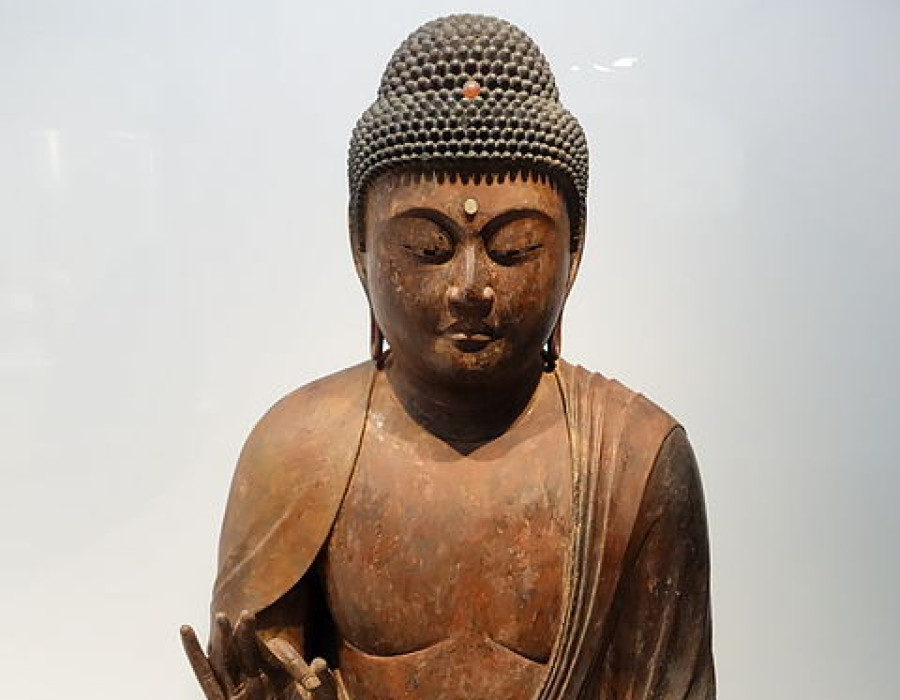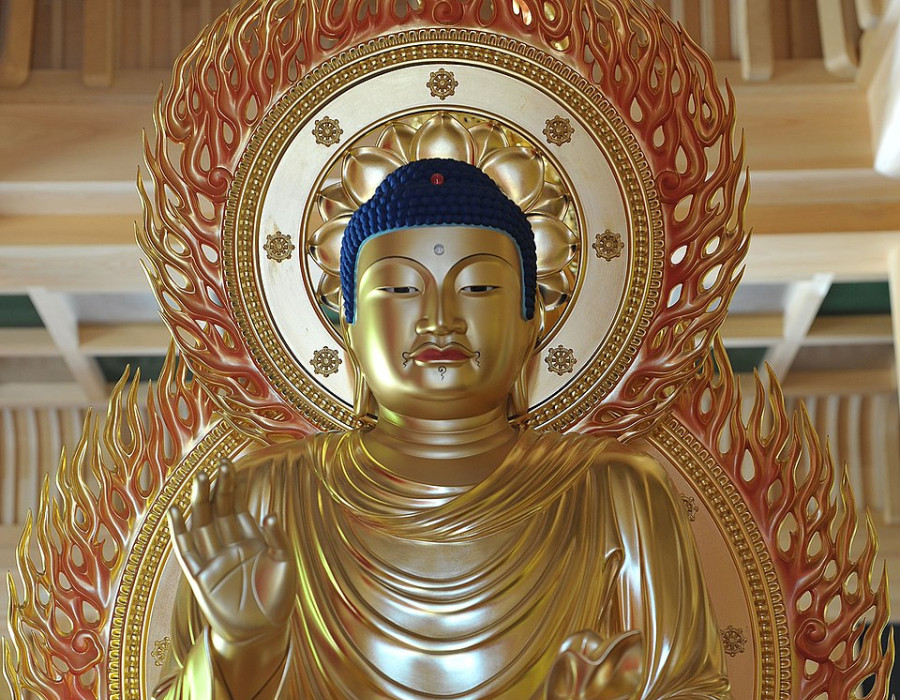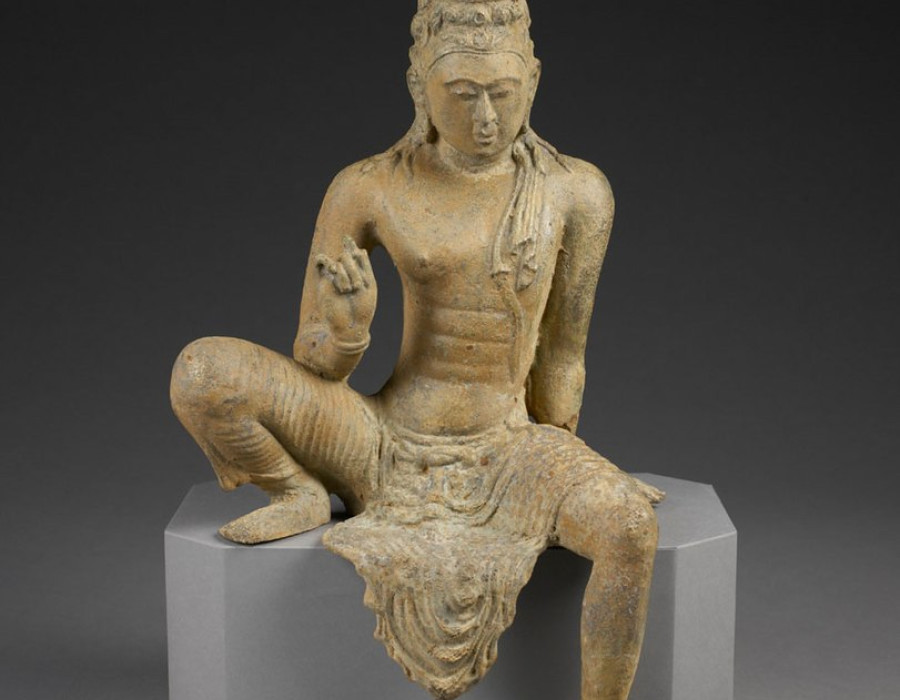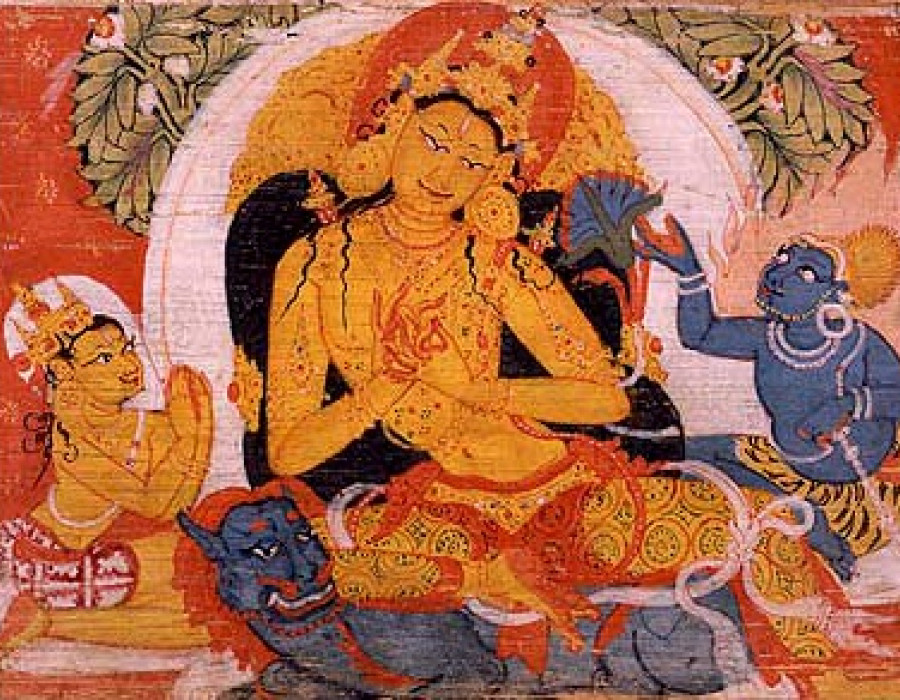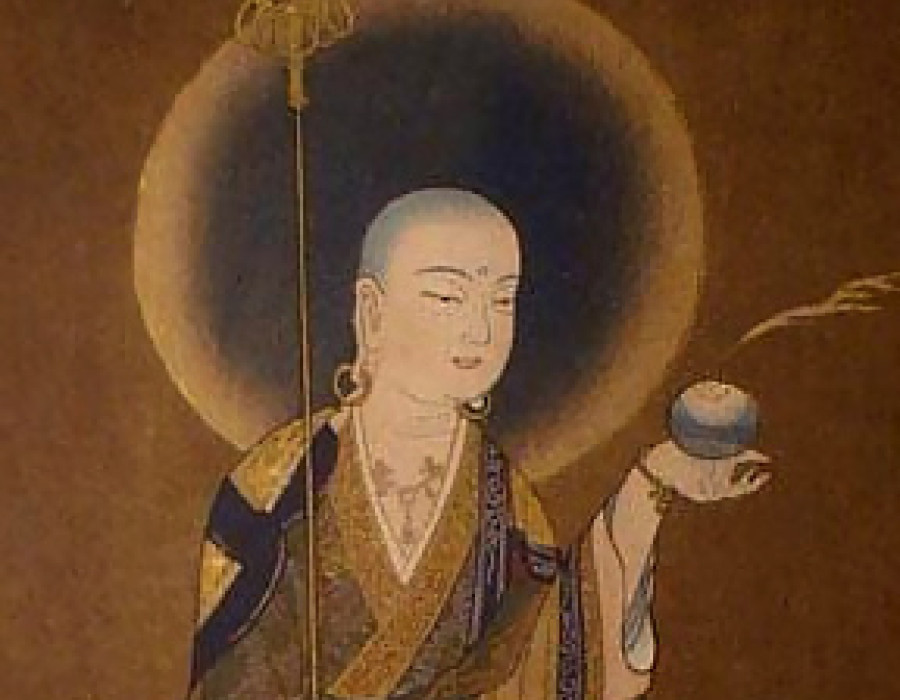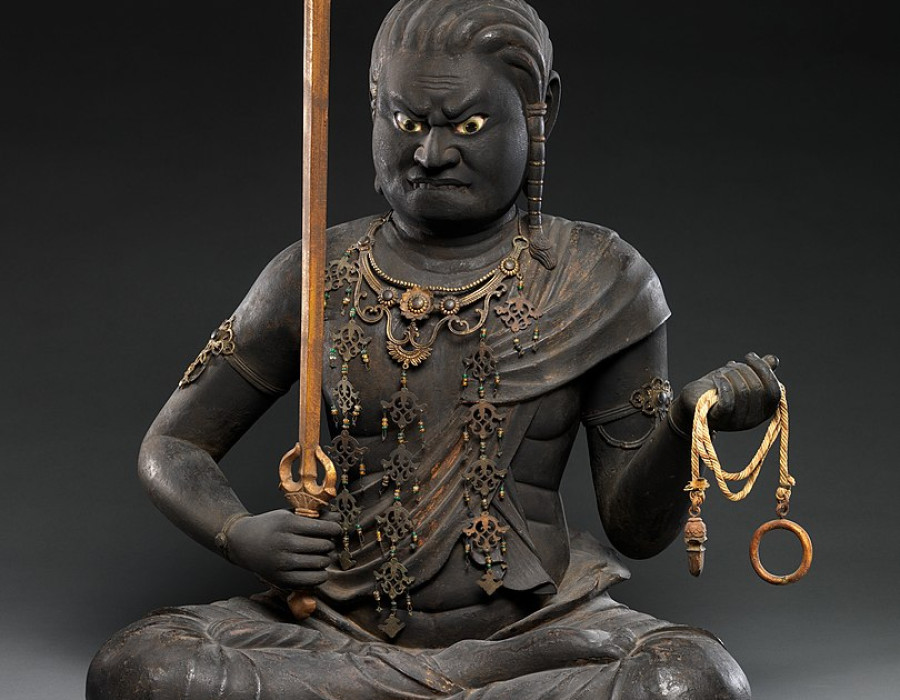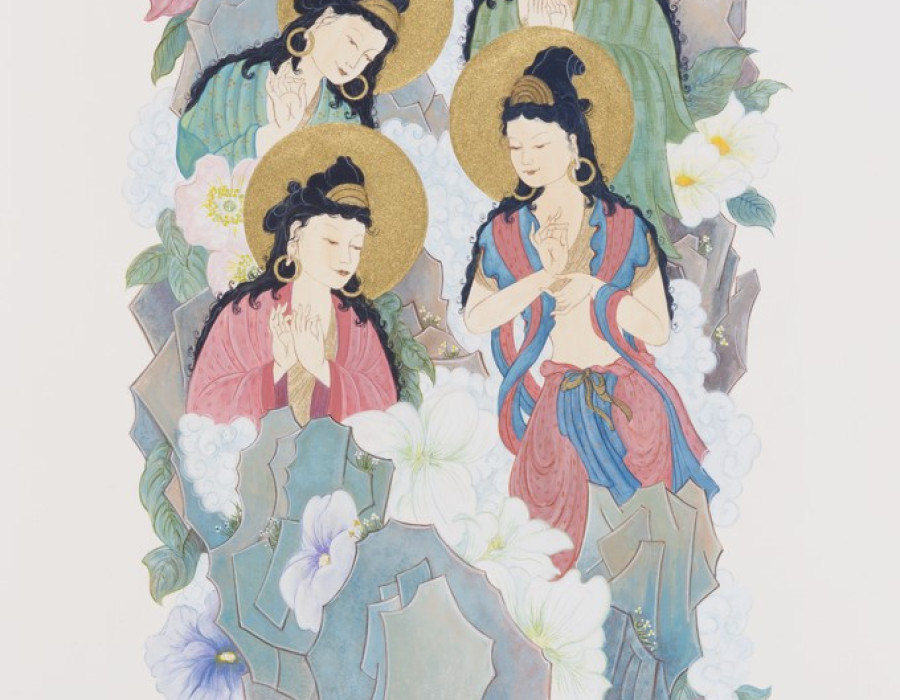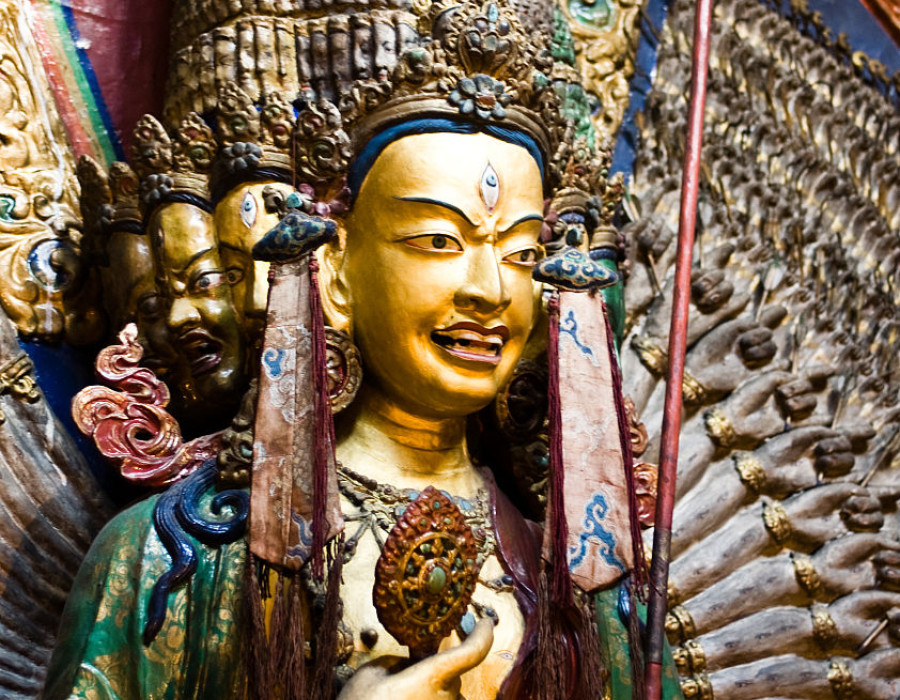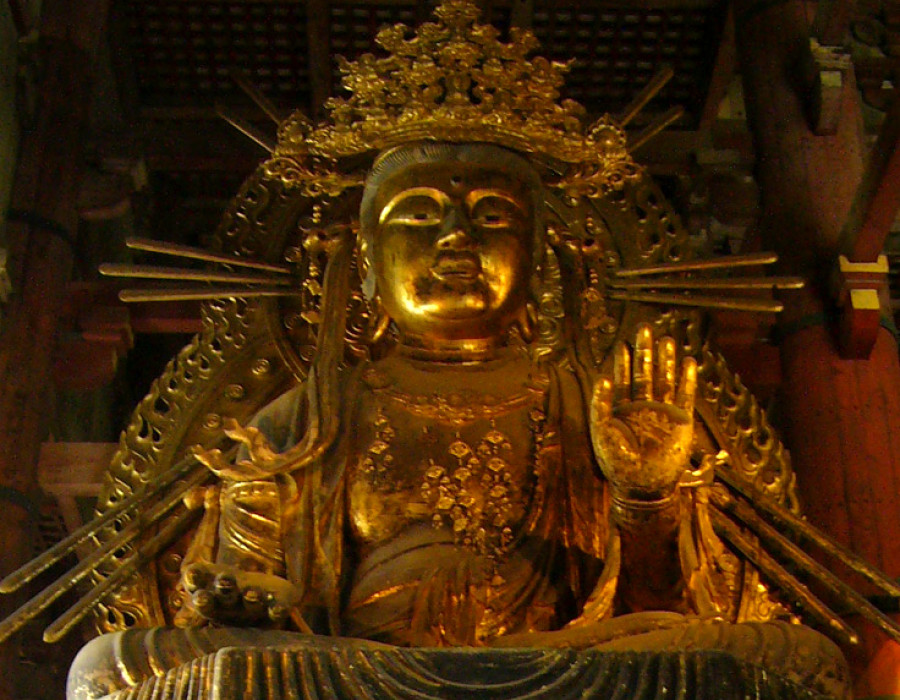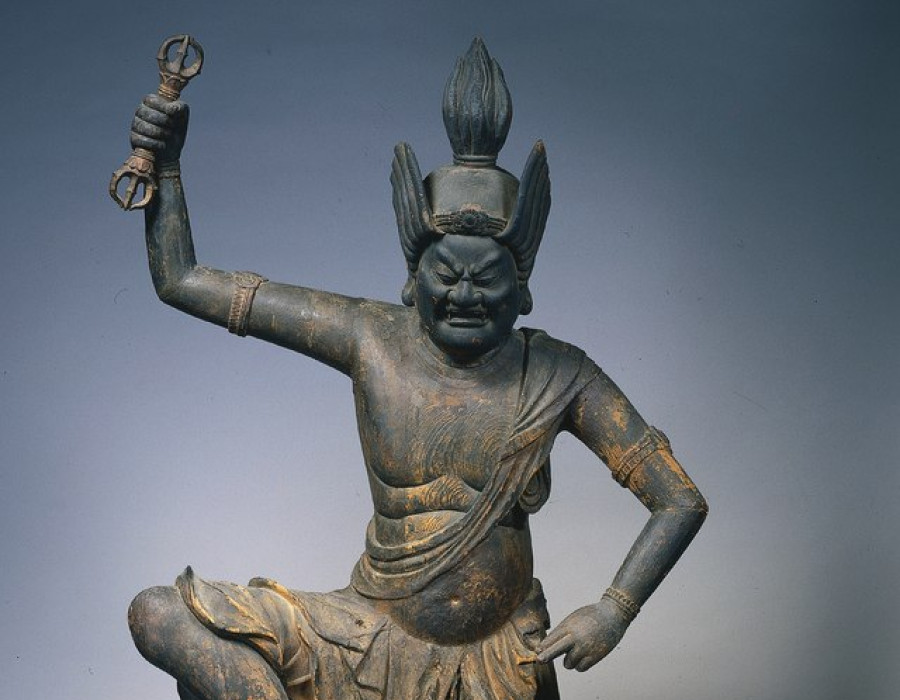
Martin Goodson
Kṣitigarbha
The Way of Devotion
Through the bonds we share with our family, the Bodhisattva Kṣitigarbha encourages compassion and duty to to all life, by extending that bond to all living beings.
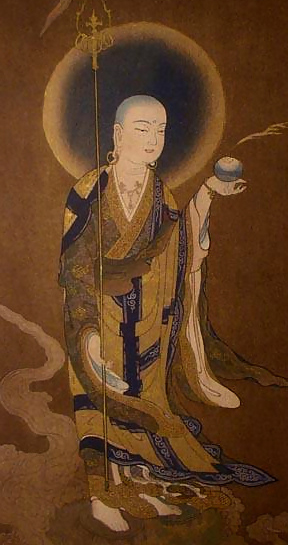 ©
© By Created by an unknown ancient artist in China or Japan, over 500 years ago. - http://www.baxleystamps.com/litho/sr/sr_3.shtml, Public Domain, https://commons.wikimedia.org/w/index.php?curid=12364979
This Bodhisattva-Mahasattva whose name means ‘Earth Treasury’ and ‘Earth Womb’ implies the seed or essence in the same way that Tathāgata-garbha refers to the inherent ‘seed’ of ‘womb’ of Buddhahood in living beings. It was this Indian Mahayana teaching that gave rise in China to the notion of ‘Buddha nature’ being inherent in all beings.
There is some uncertainty as to whether or not the sutra connected with this bodhisattva, Sutra of the Fundamental Vows of the Bodhisattva Kṣitigarbha (Kṣitigarbha Bodhisattva Pūrvapraṇidhāna Sūtra), was written in India or China, but certainly this sutra has enjoyed great popularity in both China and Japan.
The sutra is the story of the visitation by the Buddha Shakyamuni to visit his mother, Queen Maya, in one of the heavenly realms in order to preach to her. Queen Maya had died shortly after the birth of her son. The sutra takes the form of a dialogue between the Buddha and Bodhisattva Kṣitigarbha, a common form of teaching presentation in the Mahayana sutras. The Dharma (teaching), taught is that of turning over the merit of all good actions for the benefit of all beings, which is seen as an extension of the traditional virtue of filial piety that was advocated in both India and China to apply to all beings.
https://commons.wikimedia.org/wiki/File:BodhisattvaKsitigarbha(195313605).jpeg
This extension of concern from family to all beings reflects the originating story of the earthly life of the Bodhisattva. In this story, a young girl called Sacred Girl was worried that her mother, who disparaged the teachings in life, may be suffering in hell after her death. In recompense for her mother’s unskilful actions, the girl sold her possessions and made offerings of them to the Buddha of her time. One day the Buddha told her to go home and that there she would find the answer to her question. This she did, and she was transported to the hell realms where her mother had been residing, but was told that because of the merit that she had transferred to her mother the latter had just been released into the heavenly realms. The girl was relieved but very disturbed at seeing the suffering of all the hell beings. Thus she conceived a Great Vow to empty the hell realms of all beings.
Many lifetimes later, Mount Jiuhua, in Anhui Province in China, would be the place of Enlightenment for this Bodhisattva.
.jpeg) ©
© https://commons.wikimedia.org/wiki/File:BodhisattvaKsitigarbha(195313605).jpeg
At first his icon looked like many other Indian bodhisattvas, a royal figure with a crown wearing many jewels, but later he became the only bodhisattva who was depicted as a monk, with a halo, walking staff and the wish-fulfilling jewel in his left hand. Because of this, his image is sometimes confused with the character Tripitaka, the monk who was sent to India from China to collect Buddhist scriptures, and who features in the classic Chinese story ‘Monkey’. Additionally this Bodhisattva is connected with releasing beings on the Six Ways or Paths known as the Six Realms on the Buddhist Wheel of Life. These beings are seen as ‘traveling’ through the various states that make up Samsara - the realm of suffering - which makes him a patron of travellers.
Like his Western counterpart in this connection, St. Christopher, he has connections with both children and the dead and his statue is to be found in cemeteries where he appears as an escort for the recently dead to the afterlife, particularly for children who die before their parents. In Japan his counterpart, known as Jizo, who protects babies who have died through cot death, miscarriages as well as aborted foetuses. Parents will make offerings at Jizo shrines for their welfare in the afterlife.
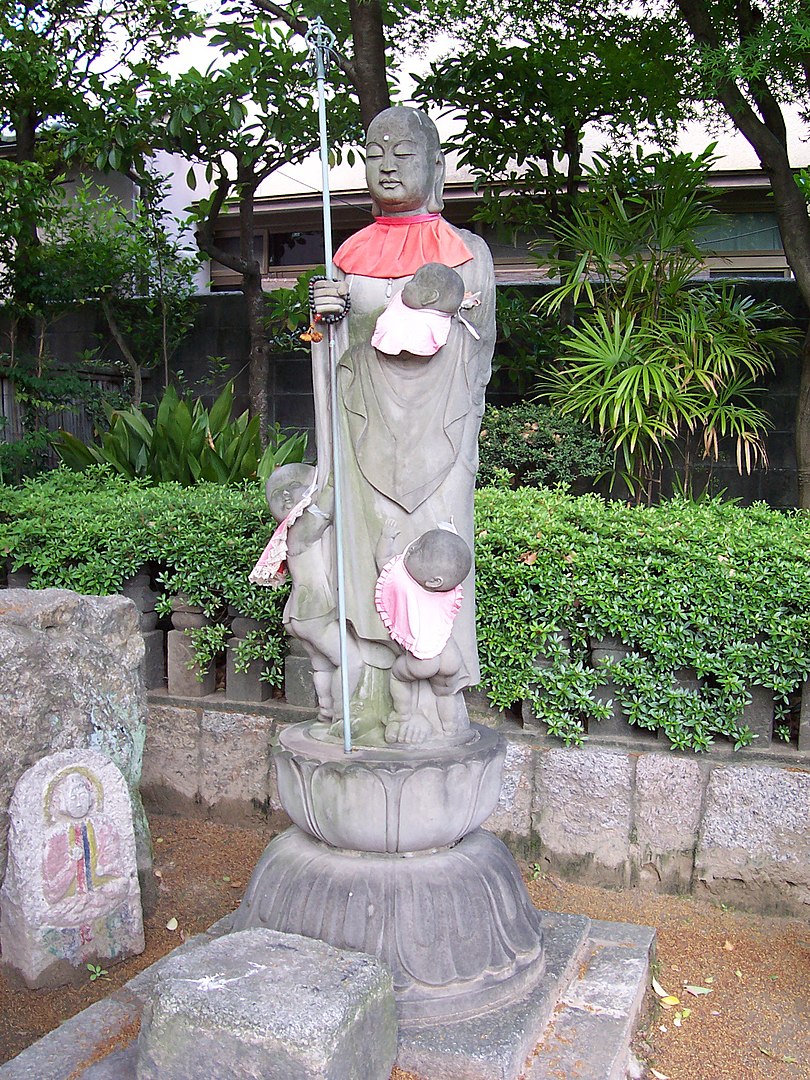 ©
© https://commons.wikimedia.org/wiki/File:BodhisattvaKsitigarbha(195313605).jpeg
The mantra associated with Kṣitigarbha in Japanese Tantric Buddhism is:
namaḥ samantabuddhānāṃ, ha ha ha, sutanu svāhā
or alternately:
oṃ ha ha ha vismaye svāhā
The practice of extending family bonds to create a bond with all beings has overtones of some Tibetan meditation practices, which propose that in a world where we are all subject to an incalculable number of rebirths we have all been mother to all beings at one time or another, and that whatever our state in this life, we have also been mothered by all beings too. At the heart of this practice is the development of universal compassion. Undertaking the practices advocated by the sutra connected to Kṣitigarbha attenuates the attachment to oneself by actualising the reality that we are connected through time to all beings. The realm of the dead being only a temporary state, rather than permanent, means that death is transitional rather than final.

